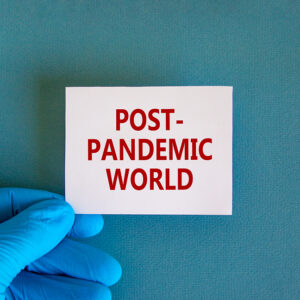Years from now, healthcare professionals, economists, public health officials, and policymakers will evaluate the true impact of the COVID-19 pandemic on the U.S. and the world. However, here in the present, the pandemic has shone a spotlight on both the negative and positive aspects of our current healthcare system. We confirmed that flaws in our healthcare system leave seniors and individuals living in low-income communities exposed to an excessive burden of illness and that ethnic and racial minorities of all ages have markedly diminished access to preventative care such as immunizations. But we also witnessed how healthcare professionals cared for the sick under tremendous pressure while sacrificing their health and saw how private and public partnerships can develop and deploy life-saving vaccines in record time.
Finally, we observed how the pandemic depressed routine childhood vaccinations across the U.S. When the country shut down in March 2020, pediatrician visits were put on hold. That inevitably led to kids falling behind on their vaccine schedules. The majority of recommended routine immunizations by the Centers for Disease Control (CDC) are for children at birth up until the age of six, with most vaccines given by age two. The successful administration of vaccines prevents diseases we rarely hear about anymore—mumps, measles, polio. However, because of significantly reduced routine immunization of children over the past two years, those diseases could become an unfortunate reality and a serious public health hazard we must deal with amid a pandemic. This will further delay a return to normalcy, which everyone is yearning for.
The reduction in vaccination rates may be greater for children of low-income families. Orders for vaccines through the Vaccines for Children (VFC) program decreased by 38 percent in 2020 compared to 2019. This data was presented at the American Immunization Registry Association (AIRA) 2021 meeting and was based on the 2021 VFC provider survey. In addition, the CDC announced in May of 2021 that provider orders for non-influenza childhood vaccines through the VFC program had decreased by a total of about 11.7 million doses during the COVID-19 pandemic. Rolled out in 1994 following mumps and measles outbreaks, the VFC is a federally funded program that provides vaccines at no cost to children who might not otherwise be vaccinated because of their household income. Vaccines available through the VFC Program are those that are recommended by the CDC Advisory Committee on Immunization Practices (ACIP) for children and adolescents. The program provides all childhood vaccinations at no cost to participating physician offices, pharmacies, public and rural health clinics, and federally qualified health centers. Since the program’s inception, the CDC estimates VFC has prevented over 400 million illnesses and nearly a million deaths. The estimated cost benefits of the program are approximately $1.9 trillion.
Public health leaders and policymakers cannot ignore the underutilization of the VFC program, as such inattention will further exacerbate health disparities already well established in our healthcare ecosystem. We need to immediately take an all-hands-on-deck approach to reverse this trend and get our immunization rates back to pre-pandemic levels. A private and public sector educational campaign led by healthcare professionals and public health leaders across the U.S. and funded by the federal government about the need for immunization catch-up and to help improve understanding of vaccine safety and efficacy is a needed first step to help increase childhood vaccination rates.
As a society, we need to ensure that we don’t lose a generation of children who are already saddled with other healthcare and societal challenges during this ongoing pandemic to vaccine-preventable diseases. We should not forget that we all benefit if we don’t have to face additional outbreaks of communicable diseases.

